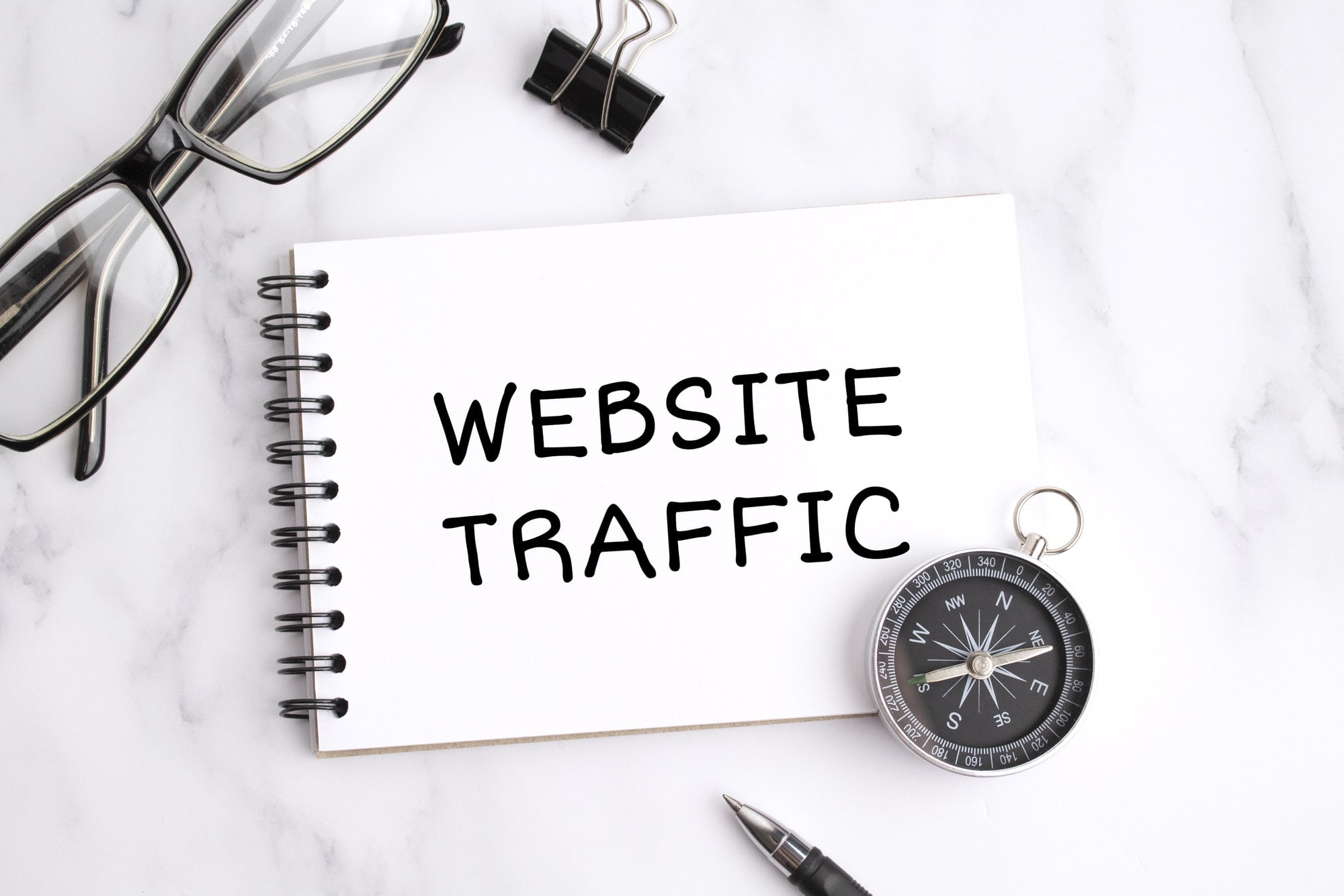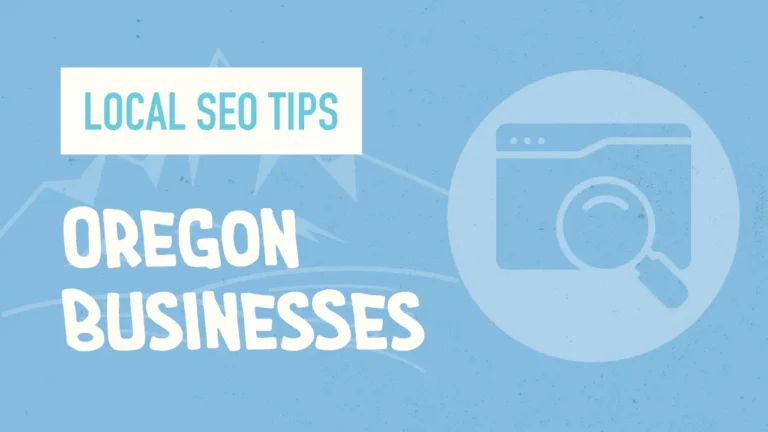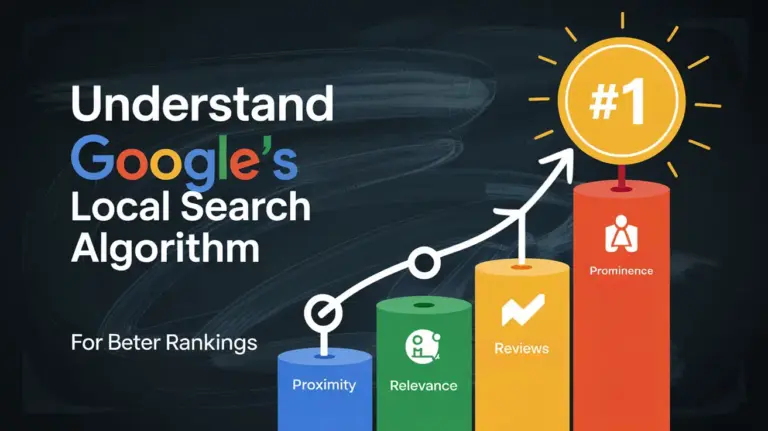As stewards of the web, we recognize the significance of **web performance metrics** in shaping the user experience offered by our websites. Search engine optimization (SEO) trends have evolved, prompting us to focus more acutely on **Understanding Core Web Vitals**. These essential metrics serve as the pulse of website health, influencing factors such as accessibility, engagement, and retention. As webmasters, our mission extends beyond mere visibility; we strive for excellence in **website optimization** to ensure our users have the most seamless and enjoyable online experience possible.
The journey toward mastering Core Web Vitals begins with a commitment to perpetual learning and adaptation. We immerse ourselves in the nitty-gritty of metrics like Largest Contentful Paint (LCP), First Input Delay (FID), and Cumulative Layout Shift (CLS), gaining an intrinsic understanding of how they affect our website’s standing in the vast expanse of the digital universe. Google’s algorithm intricately weaves these metrics into its tapestry, making them indispensable for anyone seeking a prime spot in search engine results.
Embarking on this expedition entails not just knowledge acquisition but also proactive application. Let us delve into this guide with a steadfast dedication to refining our sites, sculpting a user-centric virtual environment where performance soars and satisfaction prevails. This is our frontier, our path to prominence in the competitive realm of SEO.
Key Takeaways
- Core Web Vitals are a trio of **web performance metrics** critical for SEO.
- Understanding and improving these vitals contribute significantly to **website optimization**.
- LCP, FID, and CLS are critical factors in Google’s user experience assessment.
- Dedication to optimizing Core Web Vitals allows for better user engagement and retention.
- A proactive approach enables web admins to improve site ranking and maintain competitive advantage.
- Our goal is to create websites that not only rank well but also deliver exceptional user experiences.

Introduction to Core Web Vitals and Their Impact on SEO
As we delve into the realm of search engine optimization, the significance of Core Web Vitals has become increasingly prominent. These metrics serve as a beacon, shedding light on user experience signals that influence a site’s position in search rankings. Let’s explore the elements that illustrate why understanding and optimizing these metrics is indispensable for digital success.
The Evolving Role of Page Speed in Search Rankings
To remain competitive in today’s digital ecosystem, page loading speed is no longer a luxury; it’s imperative. As user patience dwindles and the demand for instant information rises, Google has adapted its algorithms to prioritize faster websites. This evolution underscores the reality that website speed optimization is not merely a technicality but a strategic component of SEO.
Demystifying Core Web Vitals: Definition and Importance
Core Web Vitals are the bedrock of Google’s user experience metrics. Comprising of distinct factors that measure real-world user interactions, these vitals are decisive in evaluating a site’s health. They quantify dimensions of web usability such as stability, responsiveness, and loading speed, all of which tie back to the overarching goal of enhancing user satisfaction.
Embracing the User-Centric Metrics for Website Success
We acknowledge that grasping the intricacies of Core Web Vitals can be daunting. However, familiarizing ourselves with tools like PageSpeed Insights and WebPageTest.org equips us with the analytics needed to refine our performance. Thus, we embrace these user-centric metrics, recognizing their capacity to elevate our website’s user experience and, by extension, our search ranking potential.
We present a comparative analysis of tools to help digital enthusiasts gauge and improve their website’s loading efficiency, thereby enhancing the overall user experience:
| Tool | Primary Function | User Experience Signals | Usability |
|---|---|---|---|
| PageSpeed Insights | Performance Auditing | Loading Speed, Interactivity | User-friendly with actionable insights |
| Auditzy | Comprehensive Analysis | Loading Speed, Responsiveness | Detailed reports for technical users |
| GTmetrics | Speed Testing | Efficiency, User Engagement | Intuitive with historical data tracking |
| WebPageTest.org | Custom Testing Options | Custom Metrics, Real User Monitoring | Advanced options for bespoke analysis |
As we continue to navigate the vast and ever-evolving landscape of SEO, it becomes clear that a dynamic approach toward website speed optimization is crucial for survival and success. Let us harness the power of Core Web Vitals and let every second saved in loading speed open a world of opportunities.
The Three Pillars of Core Web Vitals
As we delve into the intricacies of website optimization, it’s pivotal to focus on the three key metrics that Google emphasizes for a superior user experience. These pillars, vital for any webmaster’s toolkit, include Largest Contentful Paint (LCP), First Input Delay (FID), and Cumulative Layout Shift (CLS). Each of these plays a significant role in how users perceive the performance of a webpage, impacting both engagement and search engine rankings.
Understanding Largest Contentful Paint (LCP)
When we talk about Largest Contentful Paint, we refer to the time it takes for the page’s main content to load. An optimal LCP provides users with a sense that the webpage is loading swiftly, which is crucial for retaining their attention and minimizing bounce rates.
Breaking Down First Input Delay (FID)
First Input Delay, on the other hand, measures the time from when a user first interacts with your site to the moment the browser is able to respond to that interaction. This metric is essential for understanding the interactivity and responsiveness of a webpage, ensuring that users can navigate smoothly without frustrating delays.
Addressing Cumulative Layout Shift (CLS)
Last but not least, Cumulative Layout Shift assesses the visual stability of your website. This metric helps us understand how often users experience unexpected layout shifts – a critical factor for providing a seamless and enjoyable browsing experience.
It is crucial to monitor these metrics closely, as they collectively form the foundation of Google’s latest user experience benchmarks. Below is a detailed comparison of these Core Web Vitals, providing insights into their specific thresholds and how they contribute to website performance.
| Core Web Vital | Description | Optimal Value |
|---|---|---|
| Largest Contentful Paint (LCP) | Loading performance of the main content | 2.5 seconds or faster |
| First Input Delay (FID) | Interactivity and responsiveness metric | Less than 100 milliseconds |
| Cumulative Layout Shift (CLS) | Visual stability of the page | 0.1 or less |
To achieve excellence in these areas, we must invest in performance optimization strategies tailored to each pillar. By doing so, we not only enhance user satisfaction but also fortify our standing in today’s competitive SEO landscape.
Tools for Measuring and Analyzing Core Web Vitals
As digital landscapes evolve, it’s crucial for us to monitor and enhance our website’s user experience. To accomplish this, web vitals analysis is an instrumental procedure that gauges the health and responsiveness of a website. Fortunately, we have robust tools like Google Search Console and PageSpeed Insights at our disposal, which are tailored to measure the intricate Core Web Vitals. These instruments are not just diagnostics, and they are conduits to an optimized user experience.
To fully understand the scope and utility of these tools, let’s consider PageSpeed Insights first. This powerful service conducts a thorough performance audit of web pages, presenting actionable insights aligned with Core Web Vitals metrics. It’s critical for us to review these recommendations and benchmarks regularly to ensure we stay ahead in the SEO race.
Google Search Console, on the other hand, tracks web vital scores across an entire website, offering a macro view of our site’s health. Seeing our pages through the lens of actual user experiences allows us to make data-driven decisions to enhance performance at scale.
| Tool | Core Web Vitals Measurement | Utility |
|---|---|---|
| PageSpeed Insights | Performance Score, LCP, FID, CLS | Identifies areas for improvement and provides suggestions for optimization |
| Google Search Console | URL-based CWV reports | Monitors user experience across the site and highlights issues |
| Chrome Web Vitals Extension | Real-time LCP, FID, CLS | Provides immediate feedback as users interact with the website |
Lastly, for those of us requiring instantaneous feedback on our web vitals, the Chrome Web Vitals Extension is a gem. It provides real-time data on how users interact with the page, an invaluable resource when testing new features or updates. Remember, the insights from these tools stem from the Chrome User Experience Report, rendering them credible and incredibly effective for enhancing our websites.
At the core, understanding and improving these metrics is not just about appeasing algorithms but about delivering the seamless digital experiences that our users deserve. Let us wield these tools with precision and foresight, for our efforts today dictate the digital excellence of tomorrow.
Strategies to Optimize the Largest Contentful Paint (LCP)

To improve website performance, particularly the Largest Contentful Paint (LCP) metric, a critical starting point is the server that hosts your site. Superior hardware, faster networking equipment, and optimized server-side code can all significantly enhance loading times. Beyond server improvements, resource loading prioritization is key—ensuring that the most important parts of your site load first create a rapid appearance of complete pages to users. Further amplification of these efforts can be achieved by using a content delivery network (CDN) to reduce the geographical distance between your content and your visitors, leading to instant gains in speed.
Server Upgrades and the Role of Web Hosting
When we think about hosting, it’s not just about finding a place for our website to live. It’s about securing a fast, reliable, and scalable environment that can respond efficiently to the demands of our content. Upgrading to a premium hosting solution with dedicated resources can substantially cut down on the time it takes to deliver content to your users, directly benefiting LCP scores. Additionally, advanced configurations like the HTTP/2 protocol can further improve the speed of content delivery.
Resource Loading Optimization Techniques
Optimization techniques that fine-tune the order in which resources load play a crucial role. By implementing optimized image strategies, preloading critical assets, and deferring non-critical ones, we can control and reduce the biggest paint times. This not only speeds up the perceived load time for the user but also decreases the time until the page is fully interactive.
Leveraging Content Delivery Networks (CDNs)
Content delivery networks are vital in today’s global internet infrastructure. These networks enable us to distribute copies of our content across several geographically diverse servers, ensuring users have access to the data from a location nearest to them. This reduces latency, improves site speed, and, as a result, enhances LCP. Especially for websites serving a wide geographic audience, CDNs are not just an optimization; they are a necessity.
Below is a table that outlines some key strategies and their direct impacts on LCP:
| Strategy | Description | Impact on LCP |
|---|---|---|
| Upgrade Hosting Plan | Move to a faster, more reliable server with dedicated resources. | Directly improve server response time and load speed. |
| Implement HTTP/2 | Adopt modern protocols for faster and more efficient data transfer. | Reduces load latency and boosts paint metrics. |
| Critical Resource Preloading | Preload key assets that are necessary for the initial paint of the website. | Ensures vital content is loaded with priority, slashing paint times. |
| Image Optimization | Compress, scale, and use modern formats for imagery. | Shrinks image weight without a loss in quality, accelerating LCP. |
| Use a CDN | Distribute content globally to minimize distance to end-users. | Lowers network latency, making sites load faster across the globe. |
Applying a combination of these strategies will set a robust foundation for not only achieving but surpassing LCP performance targets. Always remember faster load times are not just about improving scores; they’re about delivering the best user experience possible.
Enhancing User Interaction with First Input Delay (FID) Improvements
As we delve into the intricacies of First Input Delay (FID), it’s imperative to recognize its critical role in improving website performance. This measure is paramount in perceiving how swiftly your webpage becomes interactive. Every millisecond counts towards creating a seamless user experience, and that’s where JavaScript optimization comes to the fore. By streamlining JavaScript parsing, compilation, and execution, we can significantly reduce response times.
A pivotal aspect of enhancing user interactivity revolves around efficient web hosting. A robust hosting solution is the backbone of FID improvements, reducing server response time and swiftly delivering content to the user. To assist in these efforts, consider the following table, which outlines some of the effective strategies for optimizing FID.
| Optimization Strategy | Benefits | Notes |
|---|---|---|
| Minifying JavaScript & CSS | Reduces file sizes, improving load times. | Tools like UglifyJS or CSSNano can be utilized. |
| Eliminating Render-Blocking Resources | Facilitates quicker interactivity. | Async or defer attributes can be used for non-critical scripts. |
| Efficient Third-Party Scripts Handling | Minimizes unwanted latency. | Use rel= “preload” to prioritize key scripts. |
| Server-Side Rendering | Delivers a fully rendered page to the browser. | Allows quicker first paint and interaction. |
| Code Splitting | Loads only the necessary code chunks for initial load. | Webpack, Rollup, or Browserify can be instrumental here. |
Implementing these strategies ensures that when users first click, tap, or press keys on your website, the response is instantaneous and effective. Prioritizing these aspects of website creation and maintenance can lead to a considerable uptick in user satisfaction and engagement.
In sum, the journey to optimize user interaction is continuous. Our focus remains steadfast on refining the nuances of JavaScript optimization and selecting the right web hosting services to improve website performance. On this trajectory, the impact on FID is palpable, contributing to a more intuitive and responsive user experience.
Improving Layout Stability with Cumulative Layout Shift (CLS) Solutions

Our journey towards achieving unparalleled website stability and user satisfaction leads us to address the critical aspect of Cumulative Layout Shift (CLS). The key to eliminating bothersome content movement lies in strategic implementation techniques that enhance the user’s visual experience. These tactics not only improve stability but also contribute significantly towards the elusive goal of mobile-friendliness. We’ll delve into how managing media dimensions, employing lunar synchronous loading methods, and focusing on above-the-fold content can dramatically optimize layout shifts on any website.
Managing Media and Content Dimensions
One of the foundational steps in CLS optimization is to ascertain and define the dimensions of media files and content blocks before they are loaded. This practice prevents unexpected content flow and delivers a smoother browsing experience. We encourage the precise measurement and implementation of dimensions for images, videos, advertisements, and embeds as a norm for content stability.
Introducing Preloading and Asynchronous Loading Practices
Asynchronous loading represents a cornerstone technique in our layout shift optimization toolkit. Through this approach, we can delay the loading of non-essential resources, allowing the critical sections to render promptly. This approach facilitates the swift availability of user-interaction elements and bolsters site performance on both desktop and mobile platforms.
Prioritizing Above-the-Fold Critical Elements
Our attention to above-the-fold content is unwavering. By prioritizing the loading of essential elements that the user first interacts with, we ensure an efficient and engaging experience from the moment the webpage opens. This technique underscores our commitment to delivering immediate interactivity, reinforcing the positive integration of both CLS and mobile-friendliness, along with user engagement.
Below is a practical summary that illustrates our commitment to enhancing user experience through meticulous layout shift optimization:
| Optimization Strategy | Benefits | Implementation |
|---|---|---|
| Defining media dimensions | Prevents reflow and layout shifts | Specify width and height in HTML/CSS |
| Asynchronous resource loading | Improves page responsiveness | Use async/defer attributes in scripts |
| Prioritizing above-the-fold content | Enhances initial user interaction | Inline critical CSS and defer non-critical |
| Utilizing preload for key assets | Speeds up access to critical resources | Use rel= “preload” in link tags |
In our hands, these solutions pave the way for not just a stable and seamless experience but one that is deeply rooted in the principles of mobile-friendliness and layout shift optimization. As we continue to refine these practices, we remain at the forefront of delivering digital excellence that meets and exceeds user expectations.

Understanding Core Web Vitals: Navigating the Future of User Experience
As we delve into the ever-evolving landscape of website optimization, it’s clear that Core Web Vitals are poised to become a cornerstone of future algorithm updates. With search engines continuously refining their evaluation processes, staying informed on these critical metrics becomes essential for webmasters seeking to maintain and improve their online presence.
The Anticipated Impact of Core Web Vitals on Future Algorithm Updates
The integration of Core Web Vitals into the algorithms of search engines like Google signifies a significant shift towards prioritizing user experience. This evolution underscores a growing trend where technical SEO and user-centric performance go hand in hand. As we monitor upcoming algorithm updates, our strategies must evolve to align with these new standards, leveraging the valuable insights that Core Web Vitals provide.
Preparing for the Shift in Search Engine Evaluation Paradigms
Anticipating changes in search engine paradigms demands a proactive stance from webmasters. The forward-looking approach to website optimization should encompass both the current demands and the future expectations set forth by the ever-changing Core Web Vitals metrics. It’s not just about adapting to the changes but mastering them to provide unmatched user experiences.
Staying Ahead of the Curve with Continuous Performance Monitoring
Maintaining peak website performance is an ongoing challenge that requires continuous performance monitoring. By regularly evaluating Core Web Vitals, we can identify areas in need of enhancement, implement timely modifications, and ensure that our websites adhere to the highest standards of user experience and technical excellence. Thriving in this dynamic environment means never resting on our laurels but instead always scanning the horizon for the next wave of innovation.
Conclusion
As we venture through the dynamic terrain of web performance optimization, we’re met with a pivotal transformation heralded by the advent of Core Web Vitals. These critical metrics serve as our compass in championing a superior user experience, propelling us towards a horizon where speed, stability, and interaction converge. Embodying this change isn’t merely about adaptation; it’s about seizing an opportunity to amplify our digital presence, cater to user demands, and set a benchmark for excellence.
Embracing the Change: The Journey to Optimal Web Performance
In the quest for optimal web performance, embracing Core Web Vitals is akin to embarking on a journey that demands continuous innovation and a steadfast commitment to our users. The path is one of rigorous analysis, meticulous optimization, and an unwavering focus on the fine details that enhance user interactions with our web pages. This trek is not without its challenges, but the rewards reaped in user satisfaction and site reliability are invaluable.
Maximizing the Benefits: Enhanced User Experience and Increased Conversions
Understanding the intrinsic link between user experience and increased conversions has never been more critical. As we refine Core Web Vitals, we witness a symbiotic rise in user engagement and conversion rates. Users yearn for websites that load swiftly, respond promptly, and offer stability throughout their digital journey—principles that, when successfully implemented, can stimulate our site’s growth and profitability. Our focus on these metrics is not only a nod to the users’ needs but also a strategic move that nurtures our bottom line.
Setting the Stage for Webmaster Success in the User-Centric SEO Landscape
To thrive in a user-centric SEO landscape, webmasters must continue to innovate, remain adaptable, and consistently deliver a high-quality user experience. Core Web Vitals are more than just benchmarks; they are the pillars upon which Webmaster’s success is built. By elevating these key performance metrics, we fortify the foundation of our websites, propelling us toward a future where both users and webmasters emerge triumphant.

FAQ
What are Core Web Vitals, and why do they matter for SEO?
Core Web Vitals are a set of specific factors that Google considers important in a webpage’s overall user experience. They consist of three main metrics: Largest Contentful Paint (LCP), First Input Delay (FID), and Cumulative Layout Shift (CLS). These metrics impact SEO because Google uses Core Web Vitals as ranking signals, meaning they affect how high a website appears in search results. By optimizing these signals, websites can improve their visibility and user satisfaction.
How do page speed and user experience affect a website’s success?
Page speed and user experience are directly correlated to a website’s success because they influence bounce rates, conversion rates, and overall satisfaction. Web pages that load quickly and provide a smooth experience are more likely to keep users engaged, leading to better outcomes for the site owner, whether that be longer session times, more conversions, or repeat visitors.
Can you explain the Largest Contentful Paint (LCP) and its importance?
Largest Contentful Paint (LCP) is a Core Web Vital metric that measures the time it takes for the largest content element visible in the viewport to become fully rendered. This is usually a large image or block of text. LCP is important because it provides an indication of how quickly a user feels the main content of a page is usable, which affects their perception of the site’s speed and reliability.
What is First Input Delay (FID), and why is it critical for interactivity?
First Input Delay (FID) measures the time from when a user first interacts with a page—for instance, clicking on a link or button—to the time when the browser is able to respond to that interaction. This metric is critical for assessing a site’s interactivity and responsiveness. A low FID is essential to provide a seamless user experience, especially for pages that require user input, such as forms and search fields.
How does Cumulative Layout Shift (CLS) impact the stability of a website?
Cumulative Layout Shift (CLS) is a measure of the visual stability of a webpage. It quantifies how often users experience unexpected shifts in page content, which can be frustrating and may lead to accidental clicks. A low CLS score helps ensure that content is stable as the page loads, thus providing a more pleasant browsing experience.
What tools are available for measuring Core Web Vitals?
There are several tools that can measure Core Web Vitals, including Google’s PageSpeed Insights, Google Search Console, the Chrome User Experience Report, and the Web Vitals Chrome extension. These tools provide insights into the web performance metrics and offer recommendations for improvement.
How can one optimize the Largest Contentful Paint (LCP) on their website?
To optimize LCP, website owners can implement server upgrades, optimize the order of resource loading, use content delivery networks (CDNs), enable compression, minify CSS and JavaScript, remove non-critical third-party scripts, and opt for lazy loading of below-the-fold images and iframes.
What strategies can be applied to improve First Input Delay (FID)?
Strategies to improve FID include minimizing and deferring JavaScript, reducing server response times, eliminating render-blocking resources, and using a web worker to run JavaScript on a background thread, allowing the main thread to remain free for user inputs.
How can webmasters address Cumulative Layout Shift (CLS) to improve stability?
To address CLS, webmasters should assign size attributes to images and video elements, prevent content from displacing other content as it loads, ensure ad elements have a reserved space, and avoid inserting new content above existing content unless in response to user interaction.
How are Core Web Vitals expected to affect future algorithm updates?
Core Web Vitals are expected to play an increasingly significant role in future algorithm updates as Google continues to prioritize page experience. This focus underscores the importance of optimizing web performance to align with the evolving standards that search engines use to rank pages.
What steps can be taken to monitor and improve website performance continuously?
Continuous monitoring and improvement can be achieved through regular audits using tools like Google Search Console and PageSpeed Insights, keeping up-to-date with the latest optimization techniques, and making iterative improvements based on real user monitoring data.







